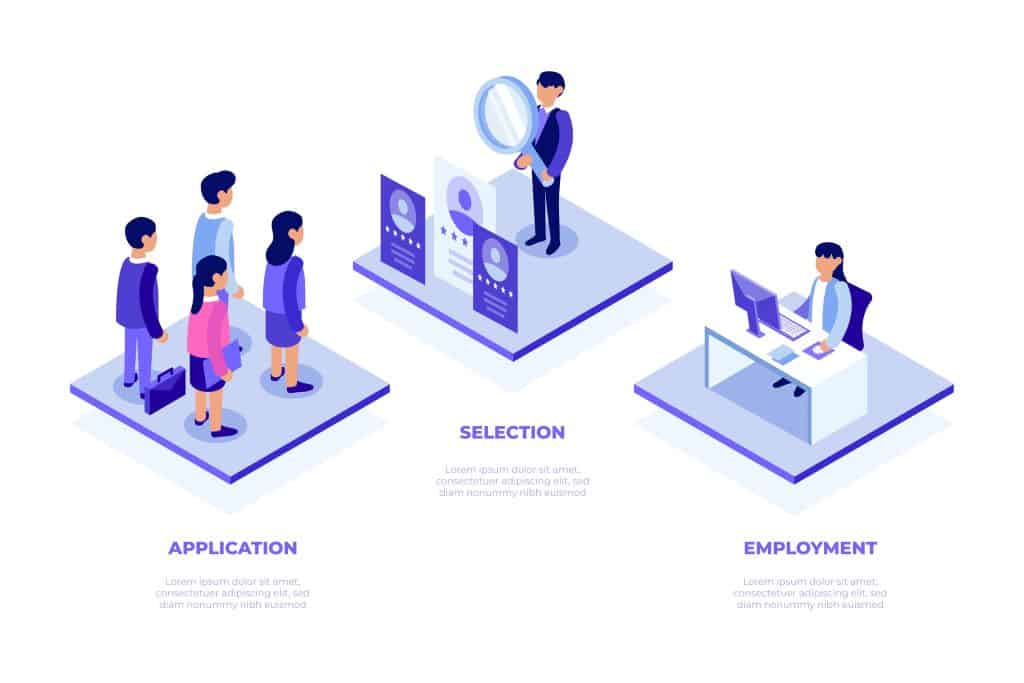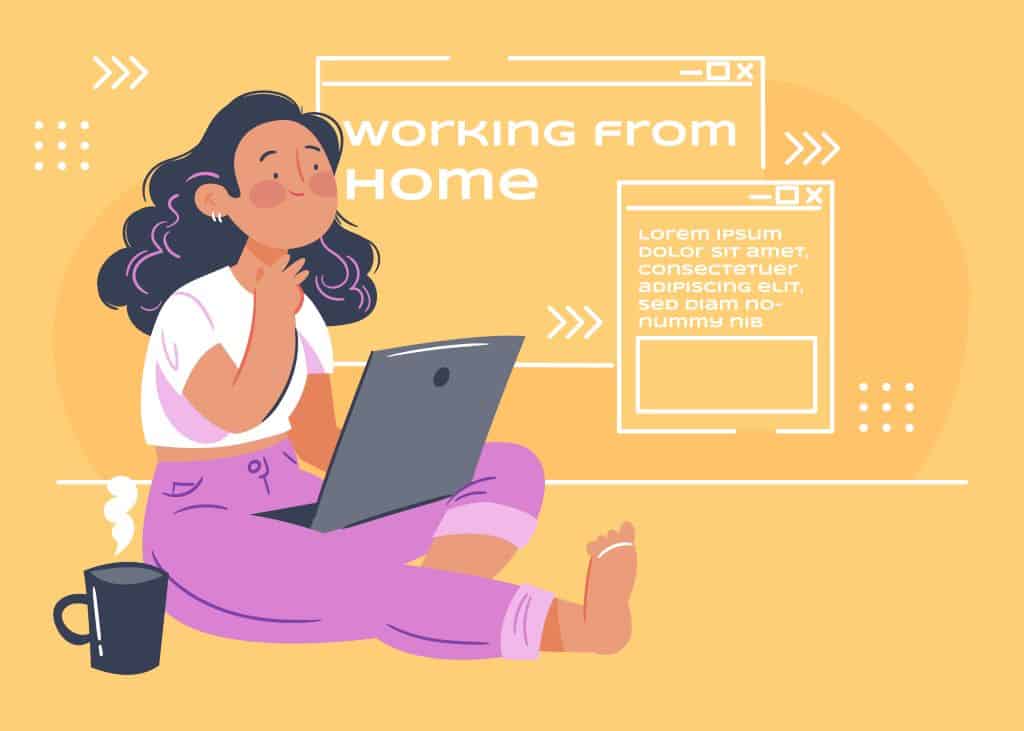During Covid, we have seen a drastic change in the working style of most organizations. While times were tough for many industries, other industries like the core IT industry have seen a growing trend in remote working styles. Many organizations have opted for remote staffing as an alternative for the smooth running of their business during the lockdown period but continued even after the quarantine. Thus, what seemed to be an option earlier became a choice in the last few years.
Even studies have found that around 35-40% of jobs can be done remotely with full efficiency. Many organizations have even embraced the thought of remote working and have a fully functional remote working atmosphere, while for some, remote working was a short-term solution. So, it is important for any business to understand the basics of remote staffing before making any changes to their working environment. This article will cover every basic detail for you to understand the concept.
What Is Remote Staffing?
Remote staffing means having staff or employees that work remotely from the places they prefer. The remote working staff works for the organization from outside of the traditional working space and environment. The process of hiring, the duties of the employees, and the timings of the work all remain the same as the traditional working style, just the working environment changes. The remote working style provides the staff opportunities to balance their professional duties to some extent with other social responsibilities like family life and education.
Remote working has given employees a great choice to balance their work-life from the comfort of their homes while giving companies an economical and sophisticated way of hiring staff. It has proved to be the right choice for many mid-sized organizations as well as start-ups in many ways.
Why opt for Remote Staffing?
In this fast-paced economy, fast-growing companies look for on-demand, low-cost, and high-potential talent personnel to join their teams. Similarly, small businesses search for some long-term, scalable solutions to expand their workforce, such as Remote Teams.
Remote working provides both small and large-scale organizations an extension of their workforce that can help them achieve their goals while integrating the companies’ cultures and work from a distance. It provides the credibility of an in-house team without the high expenses and benefits both the organizations and the employees.
What are the benefits of Remote Staffing to organizations?
It offers a plethora of benefits to the organization from cutting costs to increasing productivity, it can become a great option to expand the workforce alongside traditional working staff. Some of them are discussed below.
- Scalable Workforce
Scaling is one of the most difficult issues that any business faces. Oftentimes, organizations find it tough to fill an opening with the right skill sets and potential, and sometimes the HR teams may get stuck with urgent requirements especially when resources are limited to local areas. But with remote staffing, it becomes easy for organizations to hire a person without being worried about location barriers. Companies like Bridgentech can serve your organization with generous staffing services to help you revamp your dream team. - Budget-friendly option
For small-scale organizations and start-up firms, budgeting is somewhat always a concern. They require the right skills at the right time with the right cost to fulfill their project requirements. Most of the time the start-ups do not have a well-established HR department and in these cases, if any project is already in the pipeline, setting up the HR department and searching for the right candidate can be both costly and time-consuming. So, in these instances, the remote staffing service providers can help these organizations to expand their staff by connecting them to remote working candidates. These even reduce the cost of renting bigger spaces for offices and purchasing more equipment as most of the time, a remote working candidate uses his own laptop. - Increased Productivity
The major concern for any organization is that instead of offices, a rather distracting environment at home can affect the productivity of remote working staff. However, studies show that by being able to work comfortably at home, employees tend to work more efficiently. An average remote employee works about one and a half days more every month than a usual office-based employee, which adds up to about 16-17 more working days a year. - Higher Engagement
The main reason for the higher productivity of remote working staff is the higher engagement of the remote staff as compared to in-office staff. Remote working employees remain always in touch with each other over meetings and calls. These calls and regular follow-ups help them to be productive during office hours and reduce the time utilized in rather unnecessary communications and chit-chats. They value the flexibility to fit other essentials around their work schedules. - Access to Global Talent Pool
Remote staffing allows you to connect to the elite global talent pool. With no limits to being in the same city or region and joining the in-office workforce, remote working opens up options for the organizations to find fit across borders. They can hire people from anywhere in the world to join their team and work for them.
How does it benefit the Employee?
Remote staffing not only benefits the companies but delivers tons of benefits to the employees as well. Some of them are discussed below:
- Freedom and Flexibility
Remote workers have the freedom and flexibility to organize their day according to their workload. Companies expect their employees to complete their tasks and deliver the required results on time. Remote workers have the benefit to set their targets and complete the given tasks in the allotted timings and still get time for their other necessary commitments. They can schedule their other important work like any emergency medical appointments or a short break in between tasks unless it doesn’t affect their productivity. - Cost-saving
It is a cost-saving option for employees as going to a job daily requires a little extra penny than working remotely. It includes the expenses of travel, lunch, office wear, parking, and other activities. Sometimes an employee even has to shift to another city if he needs to join an in-office job which requires effort and money, while in remote working, the shifting and renting charges can also be saved. - Time-saving
Remote workers have some extra time benefits than in-office staff. They can easily maintain their schedule as working remotely reduces the time consumed in commuting and reaching the office daily. An office employee has to rush with some extra time in hand to avoid getting late to work because of the long traffic jams, ticket queues, and crowds. While a remote working person can manage those extra hours to schedule his other work accordingly. - Location
There is no location barrier in working remotely. Anyone from anywhere in the world can work in their dream job without shifting to an office location. This opens a wide range of opportunities for the candidate and gives him a better option to utilize their skill set. - Peaceful surroundings
Working behavior is a subjective matter. Some people like to work more intensively and quietly while finishing things in one go while others like to take short breaks in the middle and work accordingly. The office environment can sometimes become a bit louder and more stressful and can affect the productive hours of a person. The home environment otherwise allows him to complete the work according to his preference unless it is not affecting the other employees’ work and meeting all the deadlines. - Work/life balance
A remote worker can easily balance his personal and professional life and can have a better work-life balance. He can use extra hours gained from less commuting to prioritize his other work and can enjoy his personal space a bit. - Comfortable environment
Working remotely allows you to set up your workspace as you desire. You can work around in your PJs and comfortable T-shirts and can be messy without your co-workers complaining about it.
How can organizations keep up with the Remote Working Staff?
The remote working staff leads to higher productivity and greater engagement only if it is well managed and the team members are regularly communicated. Remote working requires slightly different approaches when it comes to managing teams. A few tips to keep up with your remote working team are discussed below.
- Regular staff meetings
Regular staff meetings can help them to understand the workload and prioritize important tasks. The meetings with senior employees can help them solve their doubts and queries and can ease the work. - Monitoring the staff activity
The organization can monitor the daily tasks assigned to the employees and monitor their performance. They can update their tasks accordingly to maintain a smooth workflow. - Being Flexible with time
Being flexible with working hours can help build employees’ trust in the organization and can result in better efficiency and results.
Conclusión
Remote staffing can be a good choice for your organization if you want to onboard a solid team of highly skilled and talented persons under budget. You can build your team of great talent personnel on a global level.
Preguntas frecuentes
What is meant by a remote employee?
A remote employee is a person who does not have to come to the office daily and can work comfortably from their home. Although sometimes monthly or once in two or three months can be asked to visit the office.
Which organizations provide remote staffing services?
The organizations like Bridgentech can help you find the best remote staffing options and can lead you to some talented employees to work with.
What is the cost of remote staffing?
The cost for remote staffing varies from agency to agency. Get in touch with us at info@bridgentech.com for further clearance about our services.








